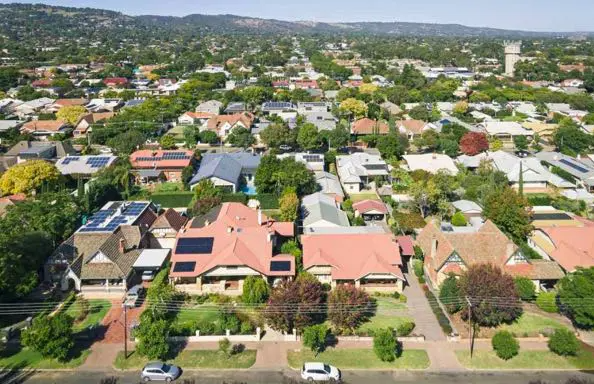
A “small but focused” South Australian trial seeks to address one of the bigger challenges facing an increasingly renewable grid – how to manage the 12GW of legacy rooftop solar systems are not currently equipped to talk directly to a network or respond to market signals.
The issue is more acute in South Australia, where the amount of rooftop solar can already more than match demand on the local network, run by SA Power Networks.
Since early last year, all new installations have had to have smart inverters that allow for “orchestration” and “flexible exports”. Now the push is on to try and get as much of the pre-existing 1.1GW of rooftop solar made to be flexible, and that will surely follow in the rest of the country.
On Friday SA Power Networks announced an important trial, backed by $1.02 million in funding from the Australian Renewable Energy Agency (ARENA), that will see retailers Simply Energy and AGL offer new incentives to customers to enable access to their existing rooftop solar systems.
The trial comes as South Australia prepares to introduce new rules to pave the way for “flexible exports” of rooftop solar – one of the key tools the state plans to use to better manage its huge distributed PV resource.
The new regulations, part of the state Labor government’s Smarter Homes Program, require all new solar systems to be capable of remotely updating their export limits in accordance with the needs of the grid – a capability that will be built into inverters.
Currently in South Australia, residential rooftop solar systems are strictly limited to export 5kW per phase, as a way of exerting at least some visibility and control over how much distributed PV generation comes and goes from the grid.
Flexible exports, which have been trialled over the past year in the state, give households installing new systems the option to export up to 10kW, in return for allowing the network to lower those export limits “periodically” to manage grid stability.
Households installing solar but which don’t want to take part in SA Power Networks’ Flexible Exports scheme can also choose that option, but will be given a hard export limit of 1.5kW.
But the new rules don’t address the the fact that a huge number of existing solar systems installed across the state are ruled out of dynamic exports due to their outdated “dumb” inverter technology.
Via the $2.1 million SAPN trial, AGL and Simply Energy will develop retailer solar management offers that reward customers for making that “dumb” solar smart.
The focus will initially be on the integration of these new customer offers with SA Power Networks’ Flexible Export connections for rooftop solar, which will be progressively rolled out as a standard service offering from July 2023.
But Arena says that in future, there is the potential to extend this approach to support other “behind-the-meter” consumer energy resources (CER), like batteries and electric vehicles.
If successful, there is also the potential for rooftop solar and CER retrofitting solutions to be adopted in other states in the National Electricity Market and potentially unlock enormous wholesale market and network benefits.
“SA Power Networks’ project represents a small, but focused trial that will help inform the design of future mechanisms for the orchestration of rooftop solar PV as well as other customer owned energy assets,” says Arena chief Darren Miller.
“By having retail customers from AGL Energy and Simply Energy involved, this will highlight how Australia’s growing solar PV capacity can be managed in a way that delivers state-wide benefits.”
One of the key hurdles for the pilot, however, might be convincing existing solar owners to open up their self-generation assets to outside monitoring and control.
Household investment in rooftop solar has traditionally been about gaining energy independence and reducing reliance on the energy market powers that be. So convincing longtime solar owners that upgrading to smarter more accessible systems will also benefit them, as well as the broader grid, might not be easy.
Nevertheless, SA Power Networks executive general manager of strategy and transformation, Mark Vincent, is confident that the benefits of more grid-responsive solar systems will outweigh any perceived down sides.
“In the longer run, we are enthusiastic about how customers can benefit from actively participating in the energy market and assist in managing the peaks and troughs of demand,” Vincent says.
“This trial is a crucial step in understanding how we can take that next step.”
AGL chief customer officer Jo Egan says the gen-tailer’s involvement in this first-of-its-kind solar project will offer valuable insight into how customers can be rewarded for enabling access to their solar system.
“AGL believes flexible export limits for distributed energy resources will be one way to manage constraints and optimise available capacity,” Egan says.
“This will ultimately give customers new incentives and access to solutions that continue to decarbonise how we live.”
Simply Energy solutions general manager Ryan Wavish says the main message for customers is that participation in the market will deliver even more value from their systems.
“This project joins our extensive portfolio of work embracing customer participation in the energy transition through home solar and battery systems, electric vehicles, controllable hot water systems and community batteries,” Wavish says.